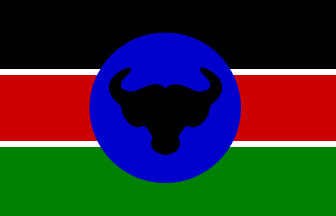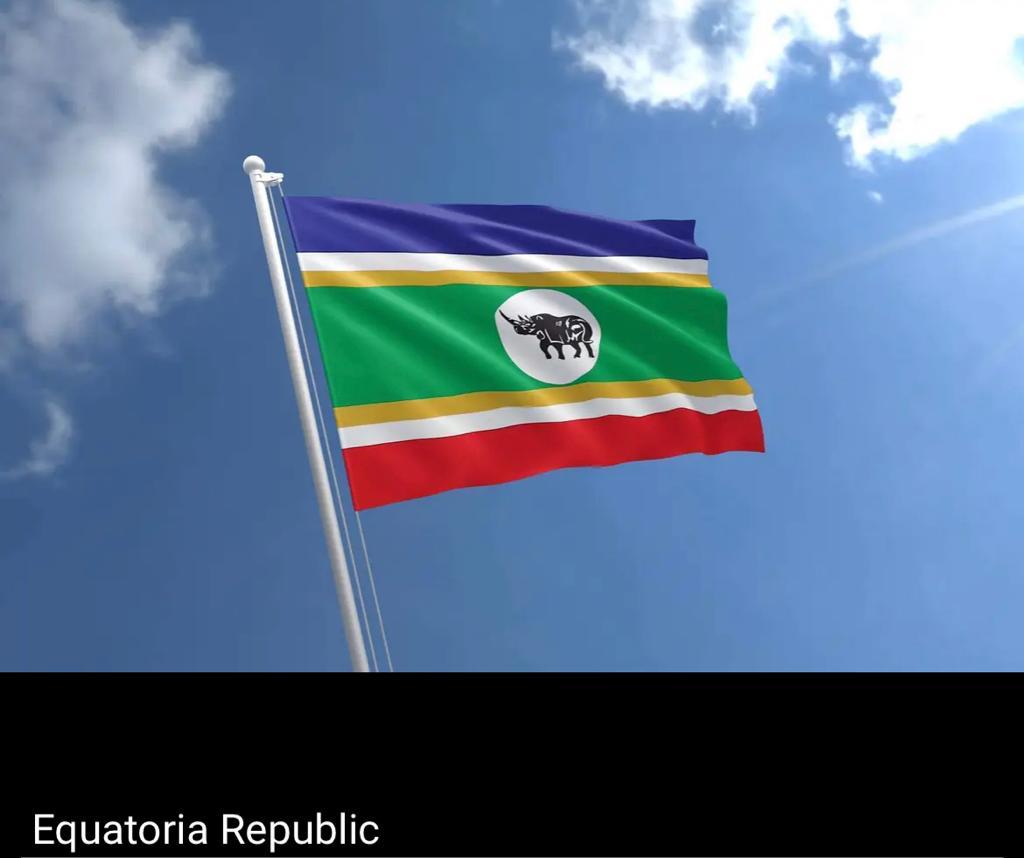|
National Convention Of New Sudan
The National Convention of New Sudan was an assembly organized by the Sudan People's Liberation Army/Movement (SPLA/M) in Chukudum, Eastern Equatoria April 2-13, 1994.Yongo-Bure, Benaiah. Economic Development of Southern Sudan'. Lanham, Md. [u.a.]: Univ. Press of America, 2007. pp. 197-198 Over five hundred delegates took part in the event. Rolandsen, Øystein H. Guerrilla Government: Political Changes in the Southern Sudan During the 1990s'. Uppsala: Nordiska Afrikainstitutet, 2005. pp. 108-110 The convention focused on questions of governance, rather than strategies of the ongoing war with the government in Khartoum.Guarak, Mawut Achiecque Mach. Integration and Fragmentation of the Sudan: An African Renaissance'. Bloomington, IN: AuthorHouse, 2011. p. 383 The National Convention had initially been scheduled to coincide with the tenth anniversary of the founding of the SPLA/M, May 16, 1993. It had however been postponed. A Convention Organising Committee (COC), consisting of 35 mili ... [...More Info...] [...Related Items...] OR: [Wikipedia] [Google] [Baidu] |
Sudan People's Liberation Army/Movement
The South Sudan People's Defence Forces (SSPDF), formerly the Sudan People's Liberation Army (SPLA), is the army of the Republic of South Sudan. The SPLA was founded as a guerrilla movement against the government of Sudan in 1983 and was a key participant of the Second Sudanese Civil War, led by John Garang. After Garang's death in 2005, Salva Kiir was named the SPLA's new Commander-in-Chief. As of 2010, the SPLA was divided into divisions of 10,000–14,000 soldiers. Following the Comprehensive Peace Agreement in 2005, the last remaining large and well-equipped militia, the South Sudan Defence Forces (SSDF), under General Paulino Matiep, signed an agreement with Kiir known as the Juba Declaration, which amalgamated the two forces under the SPLA banner. Following South Sudan's independence in 2011, Kiir became President and the SPLA became the new republic's regular army. In May 2017 there was a restructure and the SPLA took on the name of South Sudan Defence Forces (SS ... [...More Info...] [...Related Items...] OR: [Wikipedia] [Google] [Baidu] |
Blue Nile (state)
Blue Nile ( ar, النيل الأزرق ') is one of the eighteen states of the Republic of the Sudan. It was established by presidential decree nº 3 in 1992 and is named after the Blue Nile River. The region is host to around forty different ethnic groups. Its economic activity is based on agriculture and livestock and increasing mineral exploitation. In 2011, residents of Blue Nile were scheduled to hold ill-defined "popular consultations" to determine the constitutional future of the state, per the Comprehensive Peace Agreement. Instead, a dispute over the rightful government of the state, and the determination of Omar al-Bashir to eradicate the Sudan People's Liberation Movement-North, have led to a renewed insurgency and a refugee crisis. It appears that the consultations have been postponed indefinitely. Administration The State is sub-divided into six districts (with 2006 Census populations shown hereafter): * Ad-Damazin (212,712) * Al Kormok (110,815) * Ar Ros ... [...More Info...] [...Related Items...] OR: [Wikipedia] [Google] [Baidu] |
Second Sudanese Civil War
The Second Sudanese Civil War was a conflict from 1983 to 2005 between the central Sudanese government and the Sudan People's Liberation Army. It was largely a continuation of the First Sudanese Civil War of 1955 to 1972. Although it originated in southern Sudan, the civil war spread to the Nuba mountains and the Blue Nile. It lasted for 22 years and is one of the longest civil wars on record. The war resulted in the independence of South Sudan six years after the war ended. Roughly two million people died as a result of war, famine and disease caused by the conflict. Four million people in southern Sudan were displaced at least once (and normally repeatedly) during the war. The civilian death toll is one of the highest of any war since World War II and was marked by numerous human rights violations, including slavery and mass killings. Background and causes The Sudanese war is often characterized as a fight between the central government expanding and dominating peoples ... [...More Info...] [...Related Items...] OR: [Wikipedia] [Google] [Baidu] |
1994 In Sudan
File:1994 Events Collage.png, From left, clockwise: The 1994 Winter Olympics are held in Lillehammer, Norway; The Kaiser Permanente building after the 1994 Northridge earthquake; A model of the MS Estonia, which sank in the Baltic Sea; Nelson Mandela casts his vote in the 1994 South African general election, in which he was elected South Africa's first president, and which effectively brought Apartheid to an end; NAFTA, which was signed in 1992, comes into effect in Canada, the United States, and Mexico; The first passenger rail service to utilize the newly-opened Channel tunnel; The 1994 FIFA World Cup is held in the United States; Skulls from the Rwandan genocide, in which over half a million Tutsi people were massacred by Hutus., 300x300px, thumb rect 0 0 200 200 1994 Winter Olympics rect 200 0 400 200 Northridge earthquake rect 400 0 600 200 Sinking of the MS Estonia rect 0 200 300 400 Rwandan genocide rect 300 200 600 400 Nelson Mandela rect 0 400 200 600 1994 FIFA World Cup ... [...More Info...] [...Related Items...] OR: [Wikipedia] [Google] [Baidu] |
Rebel Groups In Sudan
A rebel is a participant in a rebellion. Rebel or rebels may also refer to: People * Rebel (given name) * Rebel (surname) * Patriot (American Revolution), during the American Revolution * American Southerners, as a form of self-identification; see Southern United States * DJ Rebel (born 1984), or simply Rebel, Belgian DJ * Johnny Reb, or Johnny Rebel, the national personification of the Southern states of the United States * In professional wrestling: **Rebel (wrestler), American professional wrestler ** Rockin Rebel, American professional wrestler ** The Rebel, a nickname for American professional wrestler Dick Slater Organizations and brands * Rebel (company), a sport equipment retailer in Australia and New Zealand * Rebel (entertainment complex), an entertainment complex in Toronto, Ontario, Canada * Rebel (Denmark), a Danish youth organization * Murphy Rebel, an airplane model by Murphy Aircraft * REBEL (chess), a chess program * Rebel (train), a type of train * Reac ... [...More Info...] [...Related Items...] OR: [Wikipedia] [Google] [Baidu] |
Salva Kiir
Salva (Latin for "Save") may refer to: People *Francisco Salva Campillo (1751-1828), Spanish scientist * Ramon d'Salva (born 1921), Filipino actor * Héctor Salva (1939-2015), Uruguayan football midfielder *Salva Kiir Mayardit (born 1951), South Sudanese president * Salva Iriarte (born 1952), Spanish football midfielder and football manager * Antonio Salvá (born 1952), Spanish politician and urologist *Victor Salva (born 1958), American film director *Salva (footballer, born 1961), Spanish football defender *Salva Díez Salvador Díez Zapata (born April 21, 1963 in Albelda de Iregua, Spain) is a retired Spanish professional basketball player. Clubs *1982–83: Saski Baskonia *1983–84: Tizona Burgos *1985–89: CB 1939 Canarias *1989–93: Valencia BC *1993 ... (born 1963), Spanish basketball player *Federica Salva (born 1971), Italian yacht racer *Salva Sanchis (born 1974), Spanish dancer *Salva Ballesta (born 1975), Spanish football striker *Salva (footballer, born 1981) ... [...More Info...] [...Related Items...] OR: [Wikipedia] [Google] [Baidu] |
Greater Upper Nile (region)
The Greater Upper Nile is a region of northeastern South Sudan. It is named for the White Nile, a tributary of the Nile River in North and East Africa. History The Greater Upper Nile region seceded from the Republic of Sudan on 9 July 2011 along with its fellow Southern Sudanese regions of Bahr el Ghazal and Equatoria. The three regions now constitute the Republic of South Sudan. Geography The Greater Upper Nile borders Ethiopia to the east and the Republic of the Sudan to the north. The South Sudanese region of Bahr el Ghazal lies to the west and the region of Equatoria lies to the South of Greater Upper Nile. Administrative divisions The Greater Upper Nile consists of the following states: * Jonglei State * Unity * Upper Nile * ''Pibor Administrative Area'' * ''Ruweng Administrative Area'' Between October 2015 and February 2020, the region consisted of the following states: * Akobo State * Bieh State * Boma State * Fangak State * Jonglei State * Northern Liech State * ... [...More Info...] [...Related Items...] OR: [Wikipedia] [Google] [Baidu] |
Southern Kordofan
South Kordofan ( ar, جنوب كردفان ') is one of the 18 wilayat or states of Sudan. It has an area of 158,355 km² and an estimated population of approximately 1,100,000 people (2000).South Kordofan State , Sudan Ministry of the Cabinet Affairs, 22 July 2008 Kaduqli is the capital of the state. It is centered on the . At one time it was supposed that South Kordofan was the only state in (North) Sudan suitable for producing oil, but oil has also been discovered in neighboring White Nile State in larger quantities. Under the [...More Info...] [...Related Items...] OR: [Wikipedia] [Google] [Baidu] |
Equatoria
Equatoria is a region of southern South Sudan, along the upper reaches of the White Nile. Originally a province of Anglo-Egyptian Sudan, it also contained most of northern parts of present-day Uganda, including Lake Albert and West Nile. It was an idealistic effort to create a model state in the interior of Africa that never consisted of more than a handful of adventurers and soldiers in isolated outposts. Equatoria was established by Samuel Baker in 1870. Charles George Gordon took over as governor in 1874, followed by Emin Pasha in 1878. The Mahdist Revolt put an end to Equatoria as an Egyptian outpost in 1889. Later British Governors included Martin Willoughby Parr. Important settlements in Equatoria included Lado, Gondokoro, Dufile and Wadelai. The last two parts of Equatoria, Lake Albert and West Nile are now situated in Uganda. Under Anglo-Egyptian Sudan, most of Equatoria became one of the eight original provinces. The region of Bahr el Ghazal was split from Equat ... [...More Info...] [...Related Items...] OR: [Wikipedia] [Google] [Baidu] |
Chukudum
Chukudum is a Town in Budi County of the Eastern Equatoria state of South Sudan. Location The town lies at the base of the Didinga Mountains, which are often shrouded in clouds, in spectacularly beautiful country. It is accessible only by a rough track. In May 2009 road construction resumed after being interrupted when the local people complained that the road was too wide, taking up too much land. People The predominant tribe is the Didinga. Many people keep cattle as well as farming. The main crops are sorghum, simsim, maize, tobacco, and beans. Sources of conflict include cattle raiding, armed robbery, disputes over bride prices and disputes over farmland, water and pasturage. Disputes with internally displaced people and armed deserters from the army are also ongoing problems. A June 2007 report for UNHCR noted that most families did not have latrines, and there were no public latrines. The town hosts a hospital and a primary health unit, as well as two primary schools and t ... [...More Info...] [...Related Items...] OR: [Wikipedia] [Google] [Baidu] |
Bahr El Ghazal (region Of South Sudan)
The Bahr el Ghazal is a region of northwestern South Sudan. Its name came from the river Bahr el Ghazal River, Bahr el Ghazal. The name translates as "sea of gazelles" from Arabic. Geography Bahr el Ghazal borders the Central African Republic to the west. It is an area of swamps and ironstone plateaus inhabited mainly by the Dinka people, who make their living through subsistence farming and cattle herding plus Luwo and Fartit tribes. Administrative divisions Bahr el Ghazal consists of the following States of South Sudan, states: * Lakes (state), Lakes * Northern Bahr el Ghazal * Warrap (state), Warrap * Western Bahr el Ghazal * ''Abyei Area'' Between October 2015 and January 2020, the region consisted of the following states: * Eastern Lakes State * Gok State * Western Lakes State * Aweil East State * Aweil State * Tonj State * Twic State * Lol State * Wau State * Gogrial State * ''Abyei Area'' History It was historically subject to raids by the Fur (people), Fur invader ... [...More Info...] [...Related Items...] OR: [Wikipedia] [Google] [Baidu] |
Payam (administrative Division)
A payam is the second-lowest administrative division, below counties, in South Sudan. Payams are required to have a minimum population of 25000. They are further subdivided into a variable number of '' bomas''. As of 2017, South Sudan has 540 ''payams'' and 2500 ''bomas''. The unit of administration was introduced by the SPLM/A and formalized at the National Convention of New Sudan.Yongo-Bure, Benaiah. Economic Development of Southern Sudan'. Lanham, Md. .a. Univ. Press of America, 2007. pp. 197-198 The equivalent unit in neighboring Kenya and Uganda is sub-county. References External links Subdivisions of South Sudan South Sudan South Sudan (; din, Paguot Thudän), officially the Republic of South Sudan ( din, Paankɔc Cuëny Thudän), is a landlocked country in East Africa. It is bordered by Ethiopia, Sudan, Central African Republic, Democratic Republic of the C ... Geography of South Sudan {{SouthSudan-geo-stub ... [...More Info...] [...Related Items...] OR: [Wikipedia] [Google] [Baidu] |


